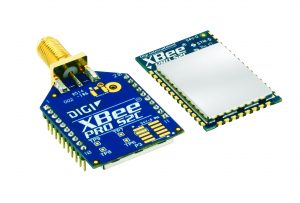US-based machine-to-machine (M2M) communications company Digi International will today test a program for wireless communications within satellites and payloads from the International Space Station (ISS) with NASA.
At 12.20pm (Central Time) today, the ISS will release a Technical and Educational Satellite 5 (TechEdSat 5), a cuboid-shaped device, approximately the size of a fire extinguisher, to an altitude of 250 miles.
After 30 minutes, pre-installed, low-cost Digi XBee 802.15.4 radio-frequency modules, taking the place of wired connections in the satellite, will become operational. Every 10 seconds, these modules will transmit important orbital data within the satellite – such as its translational acceleration and angular rate, magnetic field, atmospheric pressure, temperature, and strain.
This will act as a test for wireless communications within the satellite while in orbit and, if successful, the data will be used in the future design of satellites.
Going “wireless-in-space”
Typically, data communications within satellites are transmitted through wired connections, but as  part of a ‘wireless-in-space’ effort, NASA is working to improve traditional wiring with wireless networking to reduce weight, increase payload capacity and create new communication models.
part of a ‘wireless-in-space’ effort, NASA is working to improve traditional wiring with wireless networking to reduce weight, increase payload capacity and create new communication models.
For example, through wireless communications, future connected satellites could communicate directly with each other in a mesh network, something which mobile satellite communications company Iridium claims to have already achieved.
Essentially, this seems to be a way to bring the Internet of Things (IoT) to space.
“This is another example of the limitless possibilities of wireless communications,” said Rob Faludi, chief innovation officer at Digi International. “NASA is continually expanding the boundaries of creating and applying innovative technologies and we’re thrilled to be part of these efforts.”
Related: Helios Wire wants to ‘democratize the Internet of Things’ from space
New ways to deliver samples to earth
The ISS is also using the mission to test a passive de-orbit (meaning to depart from orbit) system to bring samples – such as atoms and molecules or soil and rocks – back to earth in an ‘on-demand’ model.
At present, rocket technology is the favored method use to decelerate delivery payloads during de-orbit. However, storage of rockets on the ISS is not possible for safety reasons.
NASA’s Ames Research Center in Silicon Valley has therefore been experimenting with ‘drag’ technology to deliver payloads to earth in a parachute-like manner through the use of an Exo-Brake.
An Exo-Brake is supposedly a specially-designed braking device that operates similar to a parachute at extremely high speeds and low air pressures, designed to descend to earth over a period of weeks.
Over the course of its descent this afternoon, the Digi XBee module will apparently be transmitting data on the performance and testing of the modulating Exo-Brake as it changes its surface area to allow the satellite to more precisely enter the atmosphere.
The initial deployment will call for the satellite to be burned up in the atmosphere, but later missions are planned with wingsail-style parachutes that will continue the effort to bring perishable experiment samples quickly back from the ISS.
“NASA is looking at wireless sensor technology as another tool to help understand vehicle dynamics, heat-shield or ablator performance, and fluid mechanics” said Marcus S Murbach, principal investigator at NASA’s Ames Research Center.
“Of particular interest is the application of wireless sensor technology to a controllable Exo-Brake – to which data can be compared to entry systems models of drag-based de-orbit.”
Related: Microsoft’s Azure helps send IoT into space






